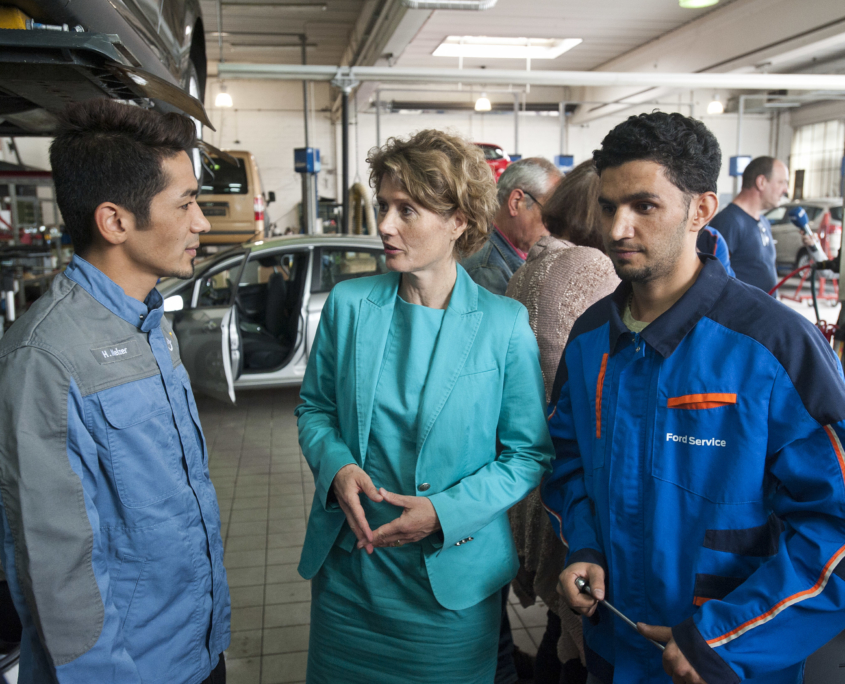Syrian Refugees’ Integration: Finding A Place In German Society

Integration happens in the workplace, neighborhoods, schools and public spaces. However, problems can appear when many people enter a host state in the same period of time when they have different cultural and religious backgrounds. The European migration crisis is an example of this when a high flow of asylum seekers and migrants arrived in Europe in a short span of time. Syrian refugees’ integration presents Germany with some significant challenges.
Refugees and Asylum Seekers
To clearly understand migration, it is essential to study terminologies. There are significant differences between the terms “asylum seeker” and “refugee.” An asylum seeker is an individual who is seeking international protection. In the E.U. context, “asylum seeker is a third-country national or stateless person who has made an application for protection under the Geneva Refugee Convention and Protocol in respect of which a final decision has not yet been taken.”
Meanwhile, refugees are “people who have successfully applied for asylum and have been granted a formal refugee status according to the Geneva Convention of 1951 (GCR) or due to authorizations to stay for humanitarian reasons due to specific national legislation.” In 2015, Europe nearly received 1.3 million asylum applications and almost one-in-five asylum seekers came from non-European countries. The leading origin countries of the asylum seekers were Syria, Afghanistan and Iraq. Asylum seekers from Syria numbered 378,000 (29% of all Europe’s asylum seekers).
The Flow of Refugees into Germany
The pull factors for asylum seekers are safety and security but they take economic factors into consideration as well. Better economic opportunities make the E.U. an attractive destination among asylum seekers. They risk their life to use dangerous and sometimes deadly routes to reach Europe. As a member state of the E.U., Germany was the essential destination country for asylum seekers. In 2015 and 2016, 1.2 million asylum seekers registered in Germany of which Syrian nationals were the leading group of origin of asylum seekers. In total, 424,907 Syrian refugees applied for asylum in 2015 and 2016.
The German Chancellor Angela Merkel’s immigration policy is the fundamental reason Germany is a top destination among asylum seekers. In 2015, German Chancellor Angela Merkel, during her speech at the Federal Press Conference, announced emphatically, “Wir schaffen das,” meaning “We can do it,” effectively committing to a permissive asylum policy. Several days later, she stressed that there is no legal limit to the number of asylum seekers that Germany will try to accept from Syria. After permitting a significant number of Syrian refugees to enter Germany, integration became the main goal.
The German Integration Model
In Germany, there are several numbers of different stakeholders involved in the integration process of asylum seekers and refugees. The recognized refugees can participate in the labor market. The federal authorities of the country are responsible for implementing a legal structure for the integration mechanism. They also control language courses and access to the labor market.
The municipalities have a crucial role in the integration process and must implement federal or regional legislation. The Federal Office for Migration and Refugees (Bundesamt für Migration und Flüchtlinge, BAMF) is responsible for evolving asylum applications and the execution of general and vocational language courses for refugees. Local education schools carry out the language courses, and in most cases, adult education centers or language courses are responsible for the courses. Furthermore, The Federal Employment Agency (Bundesagentur für Arbeit), under the Ministry of Labor and Social Affairs’ control, assists asylum seekers and refugees in developing their skills and finding jobs.
Legislation for Migrants
Since late 2014, the German government enforced several new integration policies and changes that aimed to ease the integration of refugees and asylum seekers. In 2016, the new Integration Act emerged to promote mandatory participation in language training and civic orientation. Also, the hours of orientation courses increased from 60 to 100 hours. Still, the structure of language courses remained the same. Under the Integration Act, the condition of receiving permanent residence permits depends on the outcomes of integration. Refugees can obtain permanent residence cards after five years and they should reach the A2 level in German and ensure that they can finance their means of subsistence. Moreover, since January 2016, the government monthly pays was 670 euros per asylum seeker.
The responses of the German government still show room for improvement for better integration of refugees. Nonetheless, the fact that Germany has allowed so many asylum seekers access to it may have helped prevent catastrophe. At the same time, Germany’s new integration policies are helping Syrian refugees obtain better opportunities.
– Tofig Ismayilzada
Photo: Flickr
